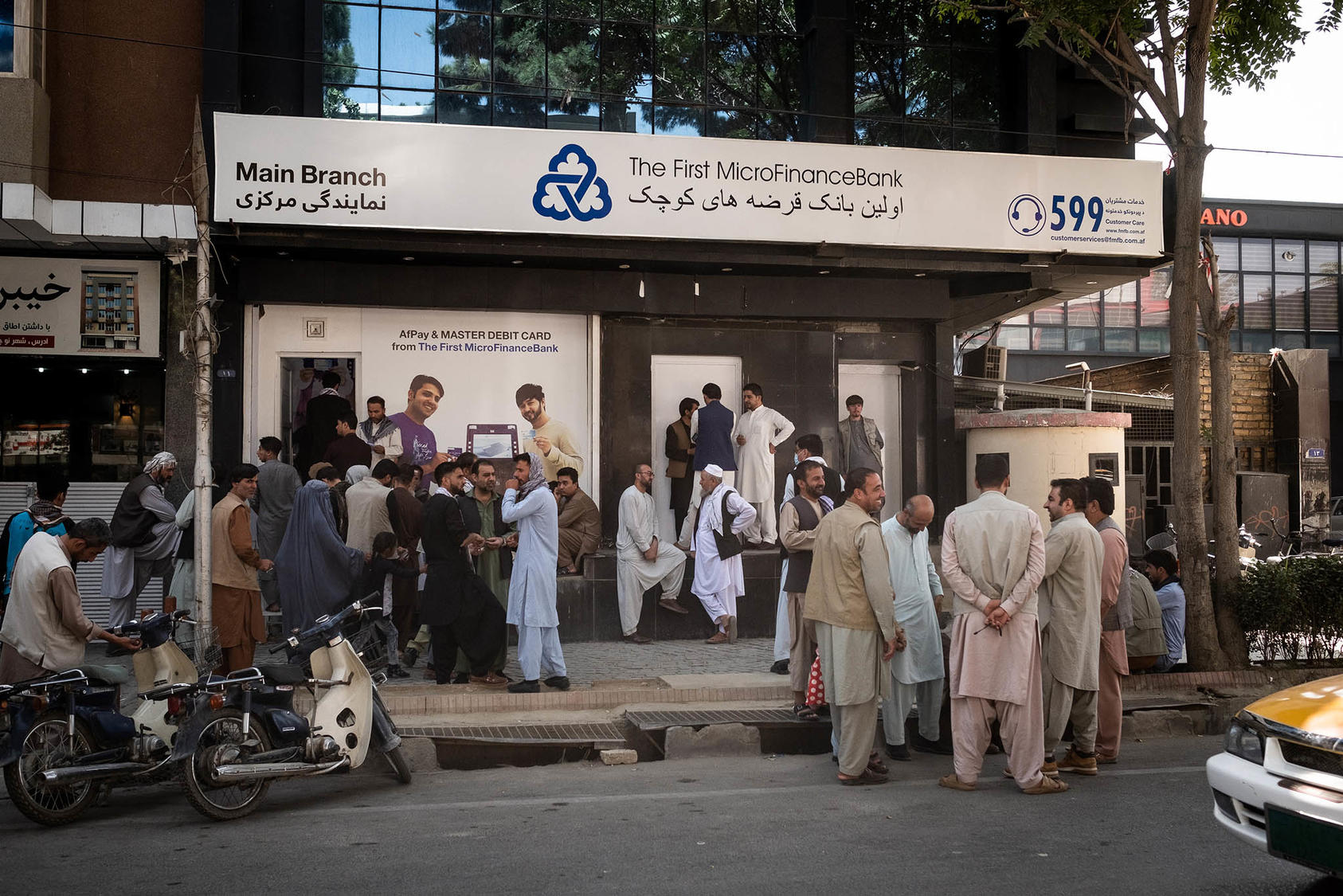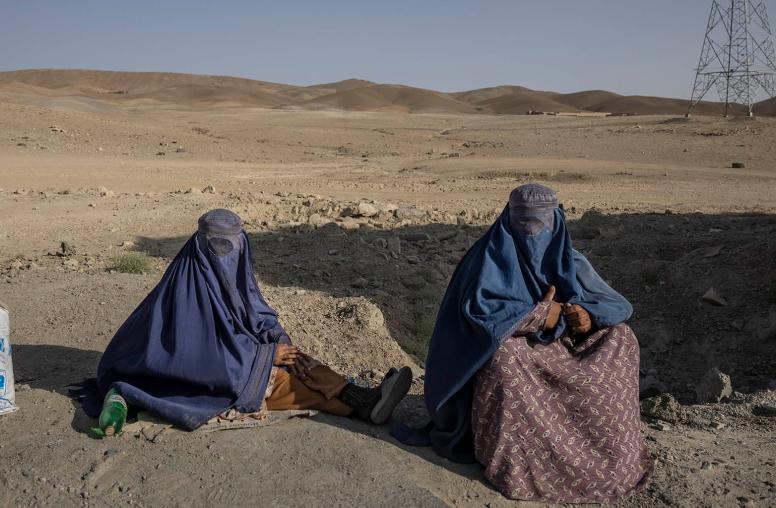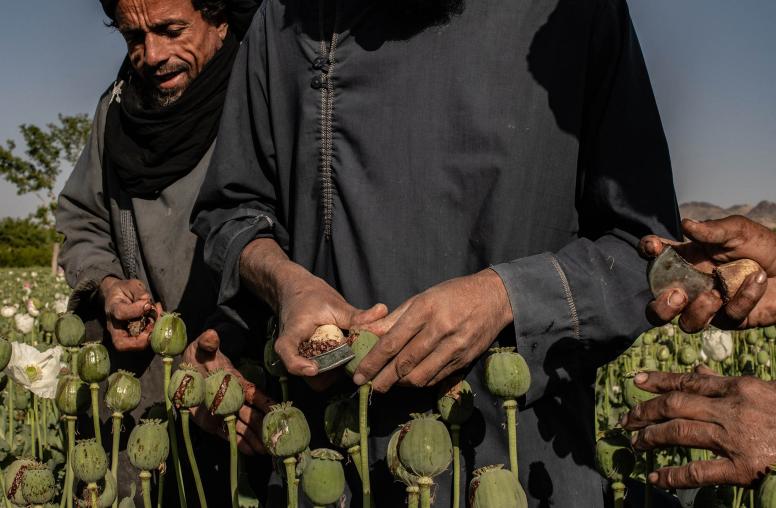U.S. to Move Afghanistan’s Frozen Central Bank Reserves to New Swiss Fund
Money deployed by the Geneva-based foundation may help the country’s lagging economy but won’t reverse its earlier collapse.
For almost seven months, Afghan central bank reserves frozen by the United States and set aside to somehow help the Afghan people, have sat, immobilized. Now those funds — $3.5 billion — are at long last on the move. On September 14, the U.S. and Swiss governments unveiled the “Fund for the Afghan People” as a Geneva-based foundation with its account at the Bank for International Settlements. The Fund will preserve, protect and selectively disburse this money. With this major policy step accomplished, new questions arise: What do these developments mean, what are realistic expectations for the reserves, and what needs to happen next?

The establishment of the Fund marks important progress in implementing the Biden administration’s plan for this half of Afghanistan’s more than $7 billion of foreign exchange reserves frozen over a year ago. First and foremost, moving them to the Fund will physically remove the money from U.S. jurisdiction and away from any vulnerability that they might at some point be subjected to civil proceedings related to suits by 9/11 victims’ families and others. And from a positive perspective, the move makes it possible to utilize this portion of the reserves for specific purposes involving banking, finance and economic stabilization, but not going through the Taliban administration.
Possible uses of the reserves include, according to the Fund’s governing bylaws and the U.S. announcement:
- Provide Afghan banking sector liquidity.
- Keep Afghanistan current on its debt service obligations (an aim critical to maintaining the country’s eligibility for new funding from international financial institutions).
- Support exchange rate stability.
- Transfer funds, as appropriate, to public Afghan financial institutions, or for any other purpose that benefits the Afghan people approved by the Fund’s Board of Trustees.
- Pay for critical imports like electricity.
- Pay for essential central banking services like SWIFT payments.
The bylaws lay out the basic structure of the Fund. The Board of Trustees, its decision-making body, consists of two U.S.-based Afghan professionals with extensive experience including working for Da Afghanistan Bank (DAB — Afghanistan’s central bank) in the past, plus the U.S. ambassador to Switzerland and an official representing the Swiss government. The accounting firm Deloitte based in Geneva serves as the review body for the Fund, and the Fund will be subject to external audit as per Swiss law. The Fund can make disbursements from the interest income earned by the reserves or by using a portion of the reserves themselves.
A Promising Step Forward
While the Fund’s establishment is a significant accomplishment, it is just the beginning. The devil will be in specifics yet to be worked out.
Under the bylaws, the founding Board of Trustees has full flexibility and discretion to take the Fund forward as it sees fit. Board decisions have to be unanimous, and on that basis it has the ability inter alia to:
- Appoint or remove board members and add new board members.
- Change the location of the Fund.
- Set disbursement policies.
- Set compensation and expense reimbursement policies (though board members do not earn salaries).
- Delegate management of assets and management more generally.
- Set up bodies such as a secretariat or advisory committee for the Fund.
- Amend and adopt by-laws.
This flexibility is necessary, but it means that decisions made by the founding board will be critical for the success of the Fund moving forward.
In the meantime, on August 26 a federal magistrate judge in New York issued a carefully reasoned and extensively documented recommendation that based on relevant U.S. laws, the remaining half of Afghanistan’s central bank reserves cannot be turned over to 9/11 plaintiffs.
Generally in line with and elaborating on the Department of Justice’s February 11 Statement of Interest regarding the reserves, the recommendation provides some grounds for hope that this portion of the reserves also will at some point become available for Afghanistan. The ultimate outcome cannot be firmly predicted, of course. The judicial process will entail several more stages — motions by the parties, District Court judge’s ruling, possible appeals to higher courts — probably taking years, before a final decision.
Don’t Expect Too Much — And What to Do Next
Expectations for the Fund need to be modest. Though freezing the reserves exacerbated Afghanistan’s economic problems, the main cause of the economic collapse was the sudden cut-off of some $8 billion a year in civilian aid and security assistance when the Taliban took over, along with the loss of billions of dollars of international military expenditures in-country as the last U.S. and other foreign troops left. Clearly, releasing half or even all of the frozen central bank reserves would not by itself resolve the country’s economic crisis.
A few recommendations for the short run:
Be very cautious about expanding the size of the board beyond the current four members. The requirement of unanimity in decision-making is understandable, but the larger the board the greater the risk of crippling gridlock. A representative from an international financial institution could be considered, or perhaps the European Union (possibly with a view toward consolidating the $2 billion of Afghan central bank reserves held in Europe into the Fund), but adding more than one or two members with a requirement for unanimity in decisions most likely would turn out be unwieldy.
Lean but effective management will be key. The quality of the Fund’s manager will make the difference between success and failure, based on experience with other, more complex trust fund arrangements such as the relatively successful Afghanistan Reconstruction Trust Fund. Making the right selection may be one of the board’s most important — and earliest — decisions.
The decision-making process for Fund actions needs to be clear and well-documented. It can be simple, given the likely limited number of discrete disbursements that will occur, but it should include a short description of the action being taken, its expected results, and an ex-post assessment by the Fund of what was achieved and any lessons learned.
An advisory committee may be needed to offer the board practical experience and expertise. It is important, however, that this body does not become an arena to debate political viewpoints.
A credible, outside entity should be hired to evaluate the Fund’s actions and results. Financial audits are already required by Swiss law, but a broader assessment by an independent party would strengthen accountability and boost the Fund’s credibility.
The Fund must operate with the maximum possible transparency. Given the highly unusual nature of the Fund, making its decisions, main processes and results available to the public will be essential to its credibility and success.
Once the Fund is on a sound footing and operational, beyond small, targeted disbursements, it could explore the possibility of leveraging its size and status to support trade financing and cooperative arrangements with state-owned banks of Afghanistan’s neighboring countries. Such agreements would promote smooth cross-country commercial banking transactions, without necessarily using significant amounts of the reserves for these purposes.
Looking Forward, the Taliban Need to Step Up
Over the longer term, the objective according to both the U.S. and Swiss announcements, is to preserve most of the reserves for their eventual return to DAB. However, the United States said that it will not support return of these funds until DAB demonstrates its independence from political influence and interference, and that it has instituted adequate anti-money laundering and countering-the-financing-of-terrorism (AML/CFT) controls, as well as completing a third-party needs assessment and taking on board a reputable third-party monitor.
During the final years of the pre-August 2021 Ghani administration, DAB was gravely weakened by politicized personnel changes and micromanagement, triggering a flight of managers and professionals that accelerated after the Taliban takeover. As a result, DAB currently has very limited capacity and its top leadership team consists of senior Taliban figures, one of whom is under U.S., U.N. and EU counterterrorism sanctions. Given the lack of external monitoring and the end of the IMF program, which had provided support and oversight to DAB before August 2021, the institution would face serious challenges in managing and making productive use of any reserves it receives.
Moreover, rapidly dissipating the reserves for short-term needs would squander this important buffer and leave Afghanistan no better off. A proper use of Afghanistan’s central bank reserves — or those of any country — is to cushion and manage macroeconomic adjustment. In Afghanistan, for example, running down reserves gradually would give the economy precious time to adjust to the loss of aid. Reserves also provide a backstop for the commercial banking system, which requires they be maintained at a decent level.
What is needed to strengthen DAB is clear enough: reaffirming its legal autonomy, which is enshrined in current Afghan law; appointing a well-qualified, non-political leadership; bringing back as much of its veteran professional, technical and managerial staff as possible; and drawing on external technical support and oversight as needed.
The eventual return of the reserves to the DAB, and to a large degree Afghanistan’s economic stability and revival overall, will depend on seeing those reforms implemented. Only the Taliban can decide whether it will go ahead and do what needs to be done.
The views expressed in this publication are those of the author(s).



